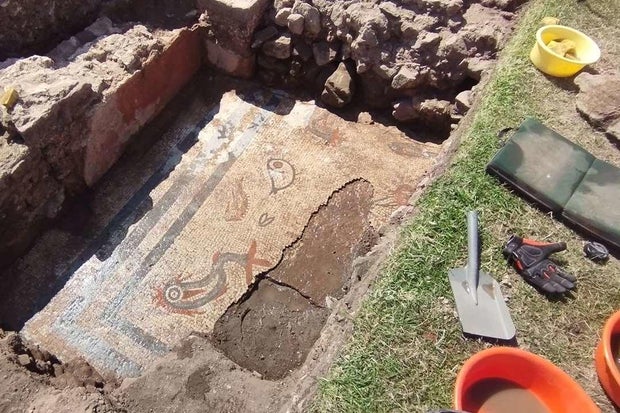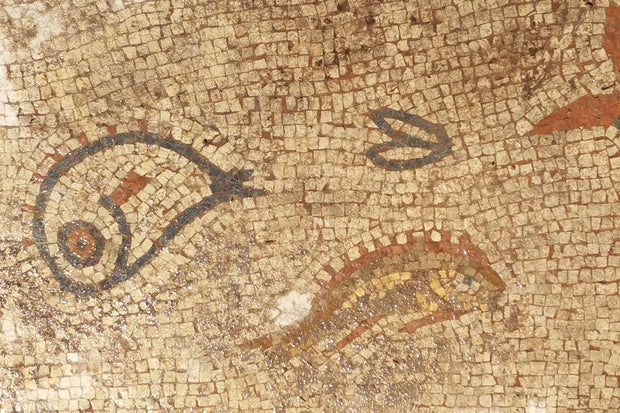Archaeologists in the United Kingdom discovered a “striking” mosaic and other relics while excavating an ancient city in western England.
Wroxeter Roman City, located in the city of Shropshire near England’s border with Wales, is an archaeological site where researchers have already unveiled ancient municipal baths, city walls and more, according to a news release on Thursday from English Heritage. Excavations within the city, which was once as large as Pompeii and is believed to have held over 200 houses and multiple civic buildings, are ongoing, with “much of the site” still buried.
Archaeologists from multiple offices, including local and national heritage organizations and the University of Birmingham, are working together on a project to find the city’s main civic temple.
The excavation found a “large monumental building” along what would have been the city’s main road. Within the building was a shrine or mausoleum “which may have honoured an important individual in Wroxeter’s earliest history,” such as a founding father of the city or a military leader.
Also within the building was the mosaic, which the news release called “beautiful” and “particularly rare.” The mosaic was likely commissioned by a “wealthy and important person,” according to the news release, and dates back to the early 2nd century, shortly after the city was established.
The mosaic depicts dolphins and fish in red, white, blue and yellow tilework, and English Heritage posted video of the artwork on social media. The “strikingly bright colours” of the “aquarium frozen in stone” are still clearly visible even after centuries underground, and parts of a painted plaster wall on one side of the mosaic also survived.
English Heritage
Archaeologists also discovered coins and pottery fragments while excavating the site.
While the city is open to tourists, the area of the excavation has been reburied for “its protection and preservation,” according to the news release.
English Heritage



